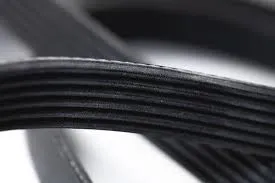- Arabic
- French
- Russian
- Spanish
- Portuguese
- Turkish
- Armenian
- English
- Albanian
- Amharic
- Azerbaijani
- Basque
- Belarusian
- Bengali
- Bosnian
- Bulgarian
- Catalan
- Cebuano
- Corsican
- Croatian
- Czech
- Danish
- Dutch
- Afrikaans
- Esperanto
- Estonian
- Finnish
- Frisian
- Galician
- Georgian
- German
- Greek
- Gujarati
- Haitian Creole
- hausa
- hawaiian
- Hebrew
- Hindi
- Miao
- Hungarian
- Icelandic
- igbo
- Indonesian
- irish
- Italian
- Japanese
- Javanese
- Kannada
- kazakh
- Khmer
- Rwandese
- Korean
- Kurdish
- Kyrgyz
- Lao
- Latin
- Latvian
- Lithuanian
- Luxembourgish
- Macedonian
- Malgashi
- Malay
- Malayalam
- Maltese
- Maori
- Marathi
- Mongolian
- Myanmar
- Nepali
- Norwegian
- Norwegian
- Occitan
- Pashto
- Persian
- Polish
- Punjabi
- Romanian
- Samoan
- Scottish Gaelic
- Serbian
- Sesotho
- Shona
- Sindhi
- Sinhala
- Slovak
- Slovenian
- Somali
- Sundanese
- Swahili
- Swedish
- Tagalog
- Tajik
- Tamil
- Tatar
- Telugu
- Thai
- Turkmen
- Ukrainian
- Urdu
- Uighur
- Uzbek
- Vietnamese
- Welsh
- Bantu
- Yiddish
- Yoruba
- Zulu
డిసెం . 05, 2024 14:20 Back to list
timing belt pulley
Understanding Timing Belt Pulleys A Key Component in Engine Performance
The automotive industry is synonymous with innovation and engineering precision, and among its myriad of components, timing belt pulleys play a crucial role in ensuring that engines function efficiently. As the heart of an engine, the timing belt system regulates the movement of the crankshaft and camshaft(s), synchronizing their operation and maintaining the correct timing for the engine’s performance.
What is a Timing Belt Pulley?
A timing belt pulley is a toothed wheel attached to the crankshaft and camshaft(s) that meshes with the timing belt. This system is essential for ensuring that the engine's valves open and close at the right times during the combustion cycle. The teeth on the timing belt and pulley interlock to prevent slippage, offering precise control over the motion of engine components.
How Timing Belt Pulleys Work
The timing belt system typically consists of the following main components
1. Timing Belt A high-strength rubber belt with teeth on the inner side to engage the pulleys. 2. Timing Pulleys These are connected to the crankshaft and camshaft(s). The crankshaft pulley drives the timing belt, which in turn drives the camshaft pulley(s). 3. Tensioner This component is responsible for maintaining the correct tension in the timing belt. 4. Idler Pulleys These are used to guide the timing belt and help maintain its position.
When the crankshaft rotates, the timing belt is driven around the pulleys, causing the camshaft(s) to turn. This synchronization is crucial because it ensures that the intake and exhaust valves open and close in harmony with the movement of the pistons, allowing for optimal combustion and engine efficiency.
timing belt pulley

Importance of Timing Belt Pulleys
The significance of timing belt pulleys cannot be overstated. When they function properly, they contribute to efficient engine operation, improved fuel economy, and reduced emissions. On the contrary, if there is a failure in the timing belt or the associated pulleys, severe engine damage can occur, leading to costly repairs. Common issues include belt slippage, which can result in the pistons hitting open valves, or a misaligned belt that can cause uneven wear on the engine components.
Maintenance and Replacement
Regular maintenance of the timing belt and pulleys is essential to ensure engine longevity. Mechanics generally recommend inspecting the timing belt at regular intervals and replacing it according to the manufacturer's specifications, as typically indicated in the vehicle's service manual. Replacement usually occurs every 60,000 to 100,000 miles, depending on the vehicle model and belt type.
When replacing the timing belt, it is prudent to replace the timing pulleys and tensioners at the same time. This comprehensive approach helps mitigate the risk of future issues and ensures that all components of the system are in good working order.
Conclusion
In summary, timing belt pulleys are integral to the performance and reliability of an engine. They serve a fundamental purpose in maintaining the synchronization between the crankshaft and camshaft(s), which is vital for efficient engine operation. Understanding the role of these components and the importance of regular maintenance can help vehicle owners avoid costly repairs and ensure their engines run smoothly for years to come. Whether you are a car enthusiast or simply a responsible vehicle owner, recognizing the value of timing belt pulleys is essential in the broader context of automotive maintenance. Investing time and resources into caring for this system can lead to significant benefits in performance, efficiency, and longevity of the vehicle.
-
Korean Auto Parts Timing Belt 24312-37500 For Hyundai/Kia
NewsMar.07,2025
-
7PK2300 90916-T2024 RIBBED BELT POLY V BELT PK BELT
NewsMar.07,2025
-
Chinese Auto Belt Factory 310-2M-22 For BMW/Mercedes-Benz
NewsMar.07,2025
-
Chinese Auto Belt Factory 310-2M-22 For BMW/Mercedes-Benz
NewsMar.07,2025
-
90916-02660 PK Belt 6PK1680 For Toyota
NewsMar.07,2025
-
drive belt serpentine belt
NewsMar.07,2025

